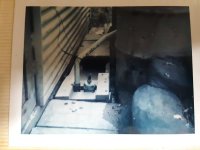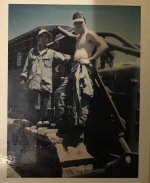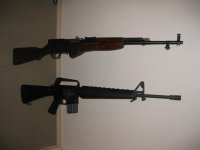From time to time, we are fortunate to meet someone who really makes a difference in people's lives. I have been privileged to meet some of these people in my own career. When I was in my formative years, sometimes I would quietly vow to myself "someday I want to be like that person." A role model for me; someone whom I admired and respected.
It is easy for us to help others if it doesn't require any sacrifice or risk for us. We pat ourselves on our back, and complement ourselves for helping others, and brag about it to others.
But for some people, helping others really does require effort and sacrifice, even perhaps risking their very life. Here is such a person.
Early in my year "in-country", in the middle of the Delta, out in the Plane of Reeds, I and one SGT were dropped off by chopper to try to teach completely uninterested South Vietnamese local troops how to call in and adjust US and VNAF airstrikes. This SGT, the "pistol-packin SGT"and I spent about a week or so in a tiny hamlet along a waterway, and there was a Jesuit Priest there. He actually had a small ruamentary concrete chapel at one end of the village, and I talked with him several times. He was I guess middle age, and had a pronounced limp, like a bad hip, or maybe two bad hips. I asked him what he had to defend himself with when the local Bad Guys came to kill him, and he showed me his revolver and corroded rounds. I gave him a spare M3 Grease Gun, the simple 45 cal SMG along with several 30 rd magazines.
He was there to spread the Gospel, risking his own life every day. I suspect he also tried to help the locals in every way he could, perhaps with care packages, maybe medical care, and anything his Jesuit Order sent him. He lived a very austere life in his little chapel.
One day we loaded up in several sampans and ventured further out into No Man's Land, to check on several outposts. I took some pics, and may show them here later, where we poled our way up narrow reed obstructed canals, not much wider than our sampan, and all I could think was that we were sitting ducks for any enemy hiding in the rushes just a few yards on each side of us. We wouldn't have known what happened.
But we made it to our destination and back before dark, and were none the worse for our experience. Here is the Jesuit priest. The bag at his feet must have been his, as it surely wasn't mine, and the .45 in the flap bolster on the bag was probably mine , as I was probably wearing my own web belt with more than just a pistol.
For years I sometimes wondered what ever happened to him; did he become ill with some miserable illness, or was he captured or killed, or just what had become of this devoted man, who had dedicated his life to serve others in bringing "The Word" to simple people, few of whom could read and write. I am not Catholic, but have always respected the Jesuit Order.
It was only a few years ago, in some magazine or the like, that I read his obituary. He had indeed survived his time in that war, and afterwards had continued his ministry here in the US.
If more of us were like this man, whose name I can't recall, our world would be a much better and more compassionate place. But even when one is a priest, it might be a good idea to be armed with a SMG.
So, stay safe, and do what you can to help others,
SF VET

It is easy for us to help others if it doesn't require any sacrifice or risk for us. We pat ourselves on our back, and complement ourselves for helping others, and brag about it to others.
But for some people, helping others really does require effort and sacrifice, even perhaps risking their very life. Here is such a person.
Early in my year "in-country", in the middle of the Delta, out in the Plane of Reeds, I and one SGT were dropped off by chopper to try to teach completely uninterested South Vietnamese local troops how to call in and adjust US and VNAF airstrikes. This SGT, the "pistol-packin SGT"and I spent about a week or so in a tiny hamlet along a waterway, and there was a Jesuit Priest there. He actually had a small ruamentary concrete chapel at one end of the village, and I talked with him several times. He was I guess middle age, and had a pronounced limp, like a bad hip, or maybe two bad hips. I asked him what he had to defend himself with when the local Bad Guys came to kill him, and he showed me his revolver and corroded rounds. I gave him a spare M3 Grease Gun, the simple 45 cal SMG along with several 30 rd magazines.
He was there to spread the Gospel, risking his own life every day. I suspect he also tried to help the locals in every way he could, perhaps with care packages, maybe medical care, and anything his Jesuit Order sent him. He lived a very austere life in his little chapel.
One day we loaded up in several sampans and ventured further out into No Man's Land, to check on several outposts. I took some pics, and may show them here later, where we poled our way up narrow reed obstructed canals, not much wider than our sampan, and all I could think was that we were sitting ducks for any enemy hiding in the rushes just a few yards on each side of us. We wouldn't have known what happened.
But we made it to our destination and back before dark, and were none the worse for our experience. Here is the Jesuit priest. The bag at his feet must have been his, as it surely wasn't mine, and the .45 in the flap bolster on the bag was probably mine , as I was probably wearing my own web belt with more than just a pistol.
For years I sometimes wondered what ever happened to him; did he become ill with some miserable illness, or was he captured or killed, or just what had become of this devoted man, who had dedicated his life to serve others in bringing "The Word" to simple people, few of whom could read and write. I am not Catholic, but have always respected the Jesuit Order.
It was only a few years ago, in some magazine or the like, that I read his obituary. He had indeed survived his time in that war, and afterwards had continued his ministry here in the US.
If more of us were like this man, whose name I can't recall, our world would be a much better and more compassionate place. But even when one is a priest, it might be a good idea to be armed with a SMG.
So, stay safe, and do what you can to help others,
SF VET










